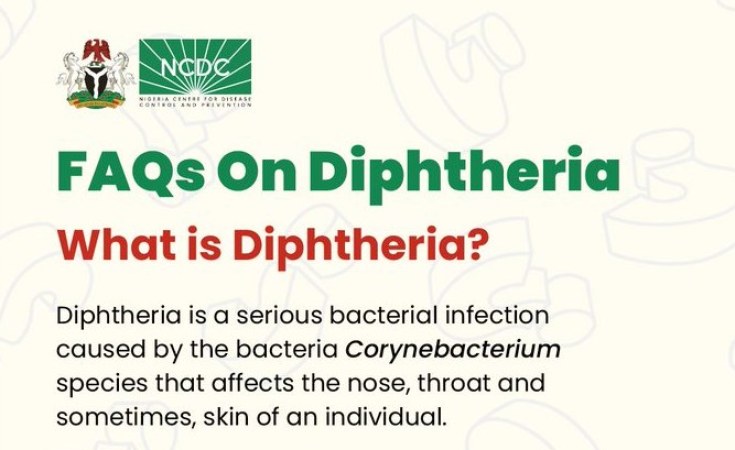WHO noted that Kano, Katsina, Yobe, Bauchi, Kaduna, and Borno states accounted for most of the suspected cases.
Nigeria is currently facing a second wave of diphtheria outbreak after a first wave of the outbreak was recorded between January and May, according to the latest situation report by the World Health Organisation (WHO).
The global body observed in the report that there is an increase in the affected population with a rise in the number of confirmed cases and related deaths.
The report shows that 4,717 confirmed diphtheria cases out of the 8,353 suspected cases have been reported in Nigeria since the outbreak was first reported in 2022.
It noted that Kano, Katsina, Yobe, Bauchi, Kaduna, and Borno states accounted for most of the suspected cases.
In response to the outbreak, Nigeria's Minister of Health and Social Welfare, Muhammad Pate, on Thursday announced an emergency task force to curb further spread in the country.
Breakdown of cases
According to WHO, since the last outbreak in Nigeria was published on 27 April, the country has reported suspected diphtheria cases to WHO.
It said between 30 June and 31 August Nigeria recorded an unusual increase in the number of confirmed diphtheria cases, and from 30 June to 31 August, a total of 5,898 suspected cases were reported from 59 local government areas in 11 states across the country.
"The majority (99.4 per cent) of suspected cases were reported from Kano (1816), Katsina (234), Yobe (158), Bauchi (79), Kaduna (45) and Borno (33)," WHO noted.
Other states with confirmed infections are Lagos, Osun, Federal Capital Territory (FCT), Nasarawa, Kaduna, Katsina, Yobe, Bauchi, Gombe, Borno, Plateau, Zamfara, Jigawa, and Kano.
According to WHO, only 1,074 (22.8 per cent) of the confirmed cases were fully vaccinated against diphtheria, 299 (6.3 per cent) were partially vaccinated, while more than half of the cases (2801; 59.4%) were unvaccinated.
Risk of further transmission
WHO also pointed out that Nigeria is expected to have 80-85 per cent vaccine coverage for community protection, emphasising the need to strengthen diphtheria vaccination coverage nationwide, especially in the most affected states, such as Kano.
"The low national coverage (57 per cent) of the Pentavalent vaccine administered in routine immunisation, and the suboptimal vaccination coverage in the pediatric population with 43 per cent of the target population unvaccinated, underscores the risk of further spread," the report reads in part.
"Additionally, particular attention is necessary for regions experiencing insecurity challenges, like the Northwest, as it hampers vaccine accessibility. Due to insecurity, especially in Northeast Nigeria, vaccination coverage remains suboptimal."
It added that the supply of diphtheria antitoxin (DAT) is currently very constrained and insufficient to respond to current demands, as there is only a limited number of manufacturers and large outbreaks are being reported in different regions of the world.
Meanwhile, Nigeria's National Centre for Disease Control (NCDC), with support from WHO and other partners, has procured 10,050 DAT vials for case management in response to the outbreak.
WHO advised that the control of diphtheria is based on primary prevention of disease by ensuring high population immunity through vaccination, and secondary prevention of spread by the rapid investigation of close contacts to ensure prompt treatment of those infected.
About diphtheria
NCDC explained that diphtheria is a serious bacterial infection caused by the bacterium called Corynebacterium species that affects the nose, throat and sometimes, the skin of an individual.
It noted that people most at risk of contracting diphtheria are children and adults who have not received any or a single dose of the pentavalent vaccine (a diphtheria toxoid-containing vaccine), people who live in a crowded environment, in areas with poor sanitation and healthcare workers who are exposed to suspected or confirmed cases of diphtheria.
On transmission, NCDC added that the disease spreads easily among people through direct contact with infected people, droplets from coughing or sneezing and contact with contaminated clothing and objects.
The symptoms of diphtheria include fever, runny nose, sore throat, cough, red eyes (conjunctivitis) and neck swelling. In severe cases, NCDC said that a thick grey or white patch appears on the tonsils and/or at the back of the throat associated with difficulty breathing.


